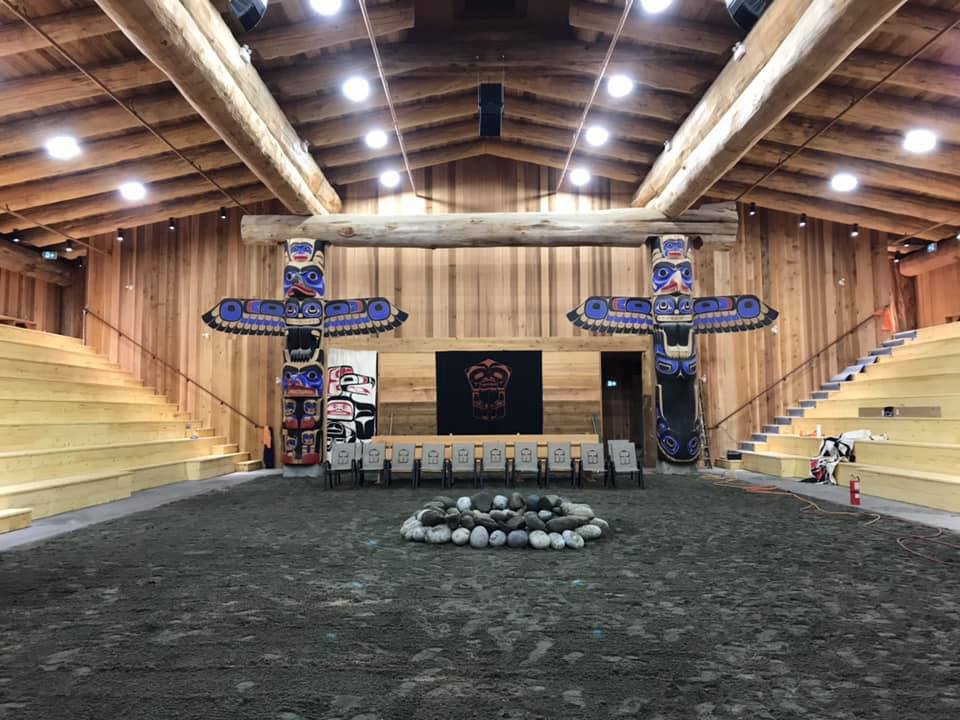British Columbia’s First Nations are hoping for the best and preparing for the worst as many of their communities lock down during the COVID-19 pandemic.

B.C.’s First Nations Health Authority (FNHA) confirms there have been positive cases of COVID-19 diagnosed in some Indigenous communities, though won’t say how many or where for privacy reasons.
“We’ve heard stories from the 1918 flu, the smallpox that simply decimated our nations’ communities, some communities seeing a death rate of 90 per cent,” said Terry Teegee, regional chief of the B.C. Assembly of First Nations.
“That’s I think in many respects in the back of our mind, so many of our First Nations are going to really take this seriously.”
Teegee said that across the province, 137 band offices have closed and 44 First Nations have declared states of emergency.
Eighty-two of the province’s 204 First Nations have cut themselves off from outside visitors, he said.

Rural lockdown
The 350-member Coldwater Indian Band near Merritt, is one nation that has closed to visitors, while asking members to isolate at home.
“It definitely has our community scared,” said Coldwater Chief Lee Spahan.
The Coldwater band declared a state of emergency last week, and Spahan said it looked likely they would extend their lockdown past April 14.
Spahan said his community was in touch with the FNHA about getting Personal Protective Equipment (PPE) funded by $305 million in federal money, but it was still unclear when it would arrive or how the gear would be divided among the region’s Indigenous groups.
That has caused issues in protecting the community’s vulnerable elders.
“We still have workers working when they go in to elders homes to make sure they’re looked after or they have to bring the medicine or food or whatever,” he said.
“But, you know, we don’t have the supplies or the equipment for our our workers that are checked in on people, and when does that equipment get to come to our to our communities?”
As a rural community, they are also running into trouble with the limits being put on how much food someone can buy at once.
“Two packages of instant noodles, which will only last, what, 24 hours?“

Urban issues
The COVID-19 situation looks very different for Lower Mainland Indigenous groups like the Squamish Nation.
Squamish Councillor Khelsilem said many Squamish members work in Metro Vancouver’s services and tourism economies, which have been virtually wiped out by the pandemic shutdown.
The nation is using its own financial resources to offer emergency support to members in need in the short term.
But in the long term, the pandemic could cause budget problems for the Squamish, as a government that relies on its businesses rather than taxation.
“We are anticipating a hit, and that’s going to have a trickle-down effect on how we prioritize program funding within the community,” he said.
The Squamish have shut down many buildings and services, said Khelsilem, but are running into a problem other, more rural, First Nations aren’t.
As an urban First Nation, much of Squamish territory is integrated by roads with neighbouring communities.
“We’ve put up signs to ask people to not visit our community, but it’s a hard issue to enforce, simply because we have approximately 20 entrances to all of our communities in the North Shore and in Squamish,” said Khelsilem.
“Trying to police or enforce a restriction on all 20 entrances 24 hours a day for the next two months is a difficult task.”
Guarding elders
One concern many of B.C.’s First Nations have expressed is the devastating effect the virus could have on their culture.
It’s that concern that prompted the Heiltskuk Nation on B.C.’s central coast to shut itself off and tell boaters to keep away.
About 200 of the 1,400 Heiltsuk members are elders, said Chief Marilyn Slett.

“We have a language that we’re trying to revitalize, and our fluent speakers are elders, and they’re all over the age of 75,” she said.
“We have a history of pandemics and losing devastating numbers in our communities over the last 100-plus years.”
Vulnerable populations
Canada’s Chief Public Health Officer Theresa Tam warned Tuesday that some of the country’s Indigenous communities could be particularly vulnerable should they see a COVID-19 outbreak.
It’s an assessment Teegee shared, pointing to underlying health conditions prevalent among First Nations such as chronic diabetes as a factor that could shift a case of COVID-19 from unpleasant to deadly.

Other communities are grappling with poverty, he said, while Indigenous people are disproportionately represented in at-risk communities like the Downtown Eastside.
“It really makes matters worse.”
Health support
B.C. is home to an Indigenous-led health authority, described as the first of its kind in Canada.
Dr. Shannon McDonald, deputy chief medical officer at First Nations Health Authority (FNHA), said the organization has been working closely with provincial health authorities and provincial health officer Dr. Bonnie Henry to coordinate a response.
That role has included helping First Nations activate and update their pandemic plans, some which haven’t been reviewed since the 2009 H1N1 pandemic.
It has also helped liaise between regional health authorities and Indigenous communities when testing or hospitalization is needed — a role that can be crucial given Canada’s history with Indigenous peoples and epidemics.
“There are long memories and deep feelings about trust, about external control, about the loss of self-determination,” she said.
The FNHA has also been helping coordinate PPE for Indigenous communities, though McDonald acknowledged they were facing the same supply challenges as health-care providers around the world.
“We’ve been able to access small, so far, but hopefully larger amounts of equipment from provincial and federal stockpiles,” she said. “Those are coming up as we move forward.”





Comments